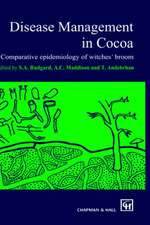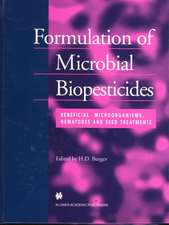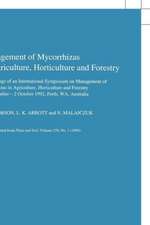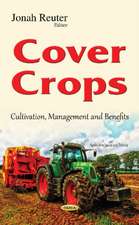The Grass Crop: The Physiological basis of production: World Crop Series
Autor M. Jonesen Limba Engleză Paperback – 7 ian 2012
Preț: 392.37 lei
Nou
Puncte Express: 589
Preț estimativ în valută:
75.08€ • 78.60$ • 62.12£
75.08€ • 78.60$ • 62.12£
Carte tipărită la comandă
Livrare economică 05-19 aprilie
Preluare comenzi: 021 569.72.76
Specificații
ISBN-13: 9789401070294
ISBN-10: 9401070296
Pagini: 388
Ilustrații: XIV, 369 p.
Dimensiuni: 152 x 229 x 20 mm
Greutate: 0.52 kg
Ediția:Softcover reprint of the original 1st ed. 1988
Editura: SPRINGER NETHERLANDS
Colecția Springer
Seria World Crop Series
Locul publicării:Dordrecht, Netherlands
ISBN-10: 9401070296
Pagini: 388
Ilustrații: XIV, 369 p.
Dimensiuni: 152 x 229 x 20 mm
Greutate: 0.52 kg
Ediția:Softcover reprint of the original 1st ed. 1988
Editura: SPRINGER NETHERLANDS
Colecția Springer
Seria World Crop Series
Locul publicării:Dordrecht, Netherlands
Public țintă
ResearchCuprins
1 Introduction — the history of improved grasslands.- 1.1 The world’s grasslands.- 1.2 The Graminae.- 1.3 Tropical and temperate grasses — C3 and C4 pathway.- 1.4 Improved grasslands.- 1.5 Recent developments in understanding the physiology of the grass crop.- 1.6 Potential production of pastures.- References.- 2 The grass plant — its form and function.- 2.1 Introduction.- 2.2 The seed and seedling establishment.- 2.3 The vegetative shoot.- 2.4 The reproductive shoot.- 2.5 Tiller production.- 2.6 Biomass production.- 2.7 Leaf photosynthesis.- 2.8 Meristematic activity and the utilization of assimilates.- 2.9 Respiration.- 2.10 The plant and the community.- References.- 3 The regrowth of grass swards.- 3.1 Introduction.- 3.2 Regrowth in vegetative plants.- 3.3 Changes in sward structure during regrowth.- 3.4 Regrowth in different defoliation systems.- 3.5 The regrowth of reproductive swards.- 3.6 The influence of the animal on sward regrowth.- 3.7 Conclusions.- References.- 4 The effects of season and management on the growth of grass swards.- 4.1 Introduction.- 4.2 Seasonal changes in the environment.- 4.3 Seasonal production.- 4.4 Management.- 4.5 Physiological basis for optimizing production from grassland.- References.- 5 Mineral nutrients and the soil environment.- 5.1 Introduction.- 5.2 The role of associated organisms.- 5.3 The continuum between soil and plant.- 5.4 A view of the essentiality of elements — defining essentiality in physiological and ecological terms.- 5.5 Seasonal changes in nutriention deployment within the plant.- 5.6 Macronutrient cycles.- 5.7 The competitive status of grasses and their macronutrient supply.- 5.8 Acclimation of grass plants to growth-limiting soil characteristics.- References.- 6 Water relations.- 6.1 Introduction.-6.2 The hydrological cycle.- 6.3 Development and effects of water stress.- 6.4 Implications for yield.- 6.5 Conclusion.- References.- 7 Physiological models of grass growth.- 7.1 Introduction.- 7.2 Model terminology.- 7.3 Requirements for crop physiological models.- 7.4 Light interception and photosynthesis.- 7.5 Respiration.- 7.6 Partition of assimilates.- 7.7 Rate of utilization.- 7.8 Transformation of asimilate into plant tissue.- 7.9 Regrowth.- 7.10 Death of tissue.- 7.11 Concluding remarks.- Acknowledgements.- References.- Definition of symbols.- 8 The effects of pests and diseases on grasses.- 8.1 Introduction.- 8.2 Insect pests.- 8.3 Nematodes.- 8.4 Fungi.- 8.5 Bacteria.- 8.6 Viruses.- 8.7 Concluding remarks.- References.- 9 The grass crop in perspective: selection, plant performance and animal production.- 9.1 Introduction.- 9.2 Selection.- 9.3 Growth and DM yields.- 9.4 Quality.- 9.5 Utilization.- 9.6 Meeting the nutritional requirements of the animal.- 9.7 Systems based on grass.- 9.8 Postscript.- References.
























